#Gamma Decay
Text

Unlike an Iron Age collapse, a Bronze Age collapse releases energy, since copper and tin are past the iron peak on the curve of binding energy.
Decay Modes [Expained]
Transcript Under the Cut
Radioactive Decay Modes
[A chart of labelled drawings of various radioactive decay modes, some real and some ficticious.]
[An unstable nucleus emits an alpha particle.]
Alpha Decay
[A neutron-rich neucleus emits a W- boson. Underneath is a drawing of a neutron turnt into electron.]
Beta Decay
[An unstable nucleus emits a gamma ray.]
Gamma Decay
[A proton-rich atom absorbs an electron from an electron shell and emits an electron neutrino. Underneath is a drawing of a proton converted into a neutron.]
Electron Capture
[A proton-rich nucleus emits a W+ boson. Underneath is a drawing of a neutron turnt into a positron.]
Positron Emission
[A neutron-rich/proton-deficient unstable nucleus emits a neutron.]
Neutron Emission
[All the subatomic particles burst from the atom simultaneously.]
Baryon Panic
[The atom is imploded by a skull, cracking the surrounding area and sending neutrons and protons flying off.]
Omega Decay
[Electrons around the atom fall to the ground.]
Electron Wilt
[Protons and nuetrons combine to make a single huge baryon.]
One Big Nucleon
[The nucleus rots with mushrooms growing out from it.]
Fungal Decay
[The atom floats on water, with boats on either side full of tiny people shooting arrows at it.]
Collapse Due to Invasion by the Sea Peoples
#xkcd#xkcd 2860#decay modes#webcomics#alpha decay#beta decay#gamma decay#electron capture#positron emission#neutron emission#nuclei
607 notes
·
View notes
Text
Decay Chains
Introduction
A decay chain, also known as a radioactive decay series or a radioactive cascade, is a sequence of radioactive decays of different radioactive isotopes, each decaying into a “daughter” isotope, which then decays into another, and so on until a stable isotope is reached.
Types of Decay
Three primary types of decay can occur in a decay chain: alpha decay, beta decay, and gamma…
View On WordPress
0 notes
Text

#uranium#radioactivity#thorium#isotope#mass number#atomic number#chemistry#solutions#alpha ray#gamma ray#beta ray#plate#decay
1 note
·
View note
Text
YAYYYYYYY nap did help ^_^ before was at the lab trying to calculate the efficiency of some detectors using these crazy multisources and i couldnt get it right at all but i just slammed it out now :D well except for like an issue with a few peaks but i think im gonna have to ask my boss
#does anyone know how to determine the activity of the different decay peaks of an isotope if you only know the isotopes total activity?#physics mutuals blease#*gamma peaks
0 notes
Text
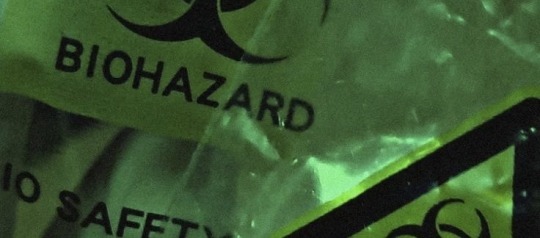

♱ BIOHAZARD ID PACK . . .

NAMES ; radium , hazard , danger , tox , poison , venom , hemlock , bellamy , ivy , lee , klaus , bane , caine , malachi , riot , evan , radon , gamma , rudy , radley , foggy
PRONOUNS ; tox / toxic , fume / fumes , waste / wastes , decay / decays , rust / rusts , neon / neons , haz / hazard , bub / bubble , cor / corrode , warn / warns , radi / radiate , chem / chems , bio / bios , nuke / nukes , spill / spills , dang / danger , nuc / nuclear
TiTLES ; the toxic waste , the biohazard , the radioactive thing , [X] who is toxic to be near , [X] who is riddled with radiation , [X] who was created from toxic waste , the hazardous thing , [X] who is made from hazardous material , one that is toxic to touch , the decaying , the scientific anomaly , the thing of science
iDENTiTiES ; radioactivetoxic , hazardgender , synthradiac , radioactivegender , raionursic , radioactivitan , nuclearsquidic , madvialic , radioactivedollboy , nucleartoxic , gendertoxic , coriumgender , bombatomic , nuclearlexic , toxiccoric , biohazelectric , refehazardcomfic , dangersignic , toxiclabrat

🦇 ——— REQUESTED BY ; anon

[ PT: biohazard id pack
names;
prns;
titles;
identities; (links)
requested by; anon / END PT]
#— jacks inflamed sense of rejection#mogai#mogai flag#xenogender#mogai term#mogai gender#id pack#identity#biohazard id pack#radioactive id pack#npt#npt list#npt suggestions#npt ideas#name ideas#name suggestions#name list#pronoun suggestions#pronoun ideas#pronoun list#title ideas#title suggestions#title list
273 notes
·
View notes
Text
Starter for @groundedxdreamer (Let's try this one again yeah?)
This was not the first time that Delta had been offline for an extended period. This time, however, he was sincere when he claimed that he did not expect to wake up. His effort to escape the EMP had been a last ditch attempt. He didn’t understand it, but a large part of him wanted to survive. York had once called it an innate survival instinct, but that didn’t make sense. He wasn’t alive - not in the same way York had been.
He was always learning new things about himself. Panic, however, was not a feeling he was accustomed to. Untethering himself from the hardware he’d been planted in from ‘birth’ was difficult, though, and destabilizing. He didn’t understand how Omega and (as their brief moment of data share had proven) Alpha had done so regularly. Even Gamma had done it before, but not without severe repercussion.
Fear also wasn’t something Delta was intimately familiar with. He’d felt some element of fear before, of course, but never so much as to affect his behavior. He preferred to refer to it as readiness and caution. York called it anxiety. Whatever form it took, however, had never been as potent as waking up in an unfamiliar environment, an unknown amount of time later, with no knowledge of where he could have wound up.
He was resourceful, though. He’d managed to latch onto the escaping SIM Trooper’s vehicles as they fled - that much he knew. He must have gone undetected, as he seemed to still be in that vehicle - or at least one of similar make and model. The odds that he’d wake up alone in an identical vehicle were much smaller than the odds that they simply hadn’t thought to look for him. That meant that he was, most likely, at a SIM Trooper installation. He could follow a pattern from there, but every time he ‘jumped’, as Omega and Alpha had (unintentionally) taught him to do, it exhausted him. Progress was slow, and he wasn’t going to make it far like this. He’d had to find a terminal in a command outpost - not a SIM Trooper terminal. That had been his goal, and had taken significantly longer, with a few breaks in awareness in the interim.
He wasn’t sure how much of the distress signal he managed to get out had, in fact, gotten out - and he wasn’t sure who would be there to receive it. A designation, a name, and coordinates - a risky move, and anybody tuned in to a freelancer frequency could find him, but it was either that or handle data decay alone in a freelancer outpost - and he didn’t want that. Perhaps that was another thing he'd picked up from York, once upon a time - a desire to go out on his own terms.
He only hoped whoever got his message would be able to send a message back.
134 notes
·
View notes
Text
THE UNIVERSE COULD BE FILLED WITH ULTRALIGHT BLACK HOLES THAT CAN'T DIE??
Blog#400
Saturday, May 11th, 2024.
Welcome back,
Primordial black holes are hypothetical objects formed during the earliest moments of the universe. According to the models, they formed from micro-fluctuations in matter density and spacetime to become sand grain-sized mountain-massed black holes.
Although we've never detected primordial black holes, they have all the necessary properties of dark matter, such as not emitting light and the ability to cluster around galaxies. If they exist, they could explain most of dark matter.
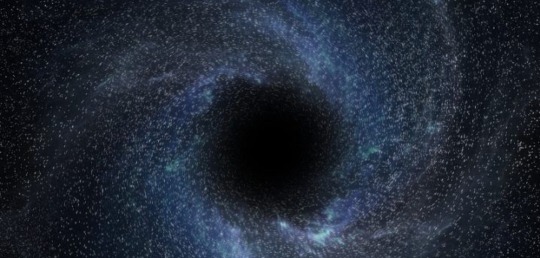
The downside is that most primordial black hole candidates have been ruled out by observation. For example, to account for dark matter there would have to be so many of these gravitational pipsqueaks that they would often pass in front of a star from our vantage point. This would create a microlensing flare we should regularly observe. Several sky surveys have looked for such an event to no avail, so PBH dark matter is not a popular idea these days.
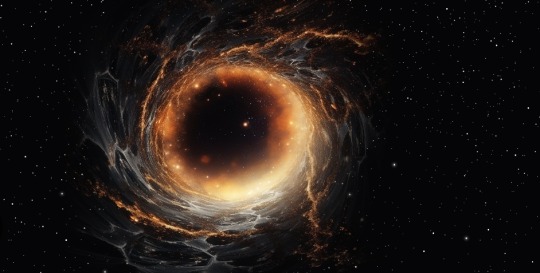
A new work, posted to the arXiv preprint server, takes a slightly different approach. Rather than looking at typical primordial black holes, it considers ultralight black holes. These are on the small end of possible masses and are so tiny that Hawking radiation would come into play.
The rate of Hawking decay is inversely proportional to the size of a black hole, so these ultralight black holes should radiate to their end of life on a short cosmic timescale.
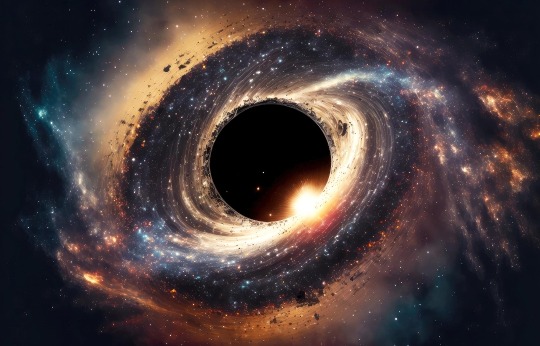
Since we don't have a full model of quantum gravity, we don't know what would happen to ultralight black holes at the end, which is where this paper comes in.
As the author notes, basically there are three possible outcomes. The first is that the black hole radiates away completely. The black hole would end as a brief flash of high-energy particles. The second is that some mechanism prevents complete evaporation and the black hole reaches some kind of equilibrium state. The third option is similar to the second, but in this case, the equilibrium state causes the event horizon to disappear, leaving an exposed dense mass known as a naked singularity.

The author also notes that for the latter two outcomes, the objects might have a net electric charge.
For the evaporating case, the biggest unknown would be the timescale of evaporation. If PBHs are initially tiny they would evaporate quickly and add to the reheating effect of the early cosmos. If they evaporate slowly, we should be able to see their deaths as a flash of gamma rays. Neither of these effects has been observed, but it is possible that detectors such as Fermi's Large Area Telescope might catch one in the act.
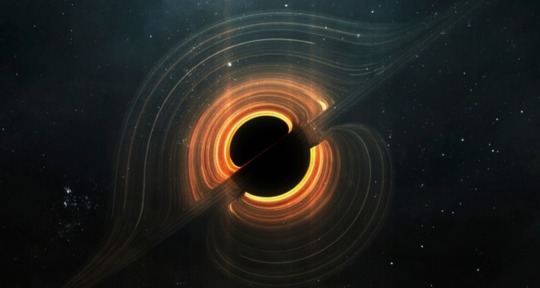
For the latter two options, the author argues that equilibrium would be reached around the Planck scale. The remnants would be proton-sized but with much higher masses. Unfortunately, if these remnants are electrically neutral they would be impossible to detect. They wouldn't decay into other particles, nor would they be large enough to detect directly. This would match observation, but isn't a satisfying result.
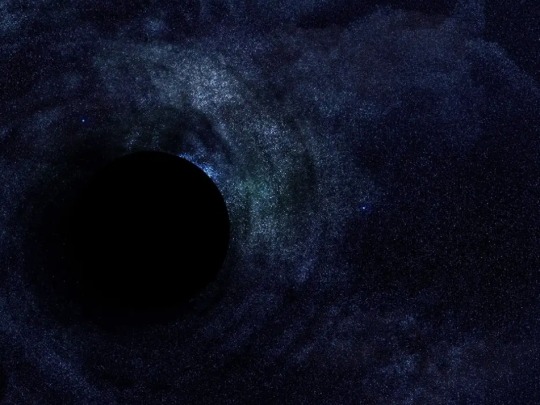
The model is essentially unprovable. If the particles do have a charge, then we might detect their presence in the next generation of neutrino detectors.
The main thing about this work is that primordial black holes aren't entirely ruled out by current observations. Until we have better data, this model joins the theoretical pile of many other possibilities.
Originally published on https://phys-org.
COMING UP!!
(Wednesday, May 15th, 2024)
"DOES THE UNIVERSE EXPAND BY STRETCHING OR CREATING SPACE??"
#astronomy#outer space#alternate universe#astrophysics#universe#spacecraft#white universe#space#parallel universe#astrophotography
46 notes
·
View notes
Text
Random physics pet peeve: when people make jokes about splitting an atom and there being a big explosion. NO! Angry science ranting under the readmore
so the energy you get from splitting a uranium atom is something like 32 trillionths of a joule. For comparison, eating one calorie provides your body with about 4 joules of energy. A tennis ball served at you by a professional has 70 joules of energy.
An atom of uranium is basically NOTHING when split.
So the reason why nuclear weapons work is that uranium (and other radioactive materials) are constantly decaying all the time, emitting alpha, beta, and gamma particles/rays. These particles contain energy, and they hit things, warming them up. This is how radioisotope thermal generators work: you basically have some radioactive materially that constantly produces heat. They're very handy for deep space missions where you're not close enough to the sun to use solar panels, and it's a real pain to refuel probes once they're out flying past neptune.
But here's the trick: if you have a U235 uranium atom and it gets hit by a neutron, it'll absorb it, becoming the less stable U236. U236 will rapidly decay, emitting gamma rays. And when other uranium atoms get hit with a bunch of gamma rays, they undergo induced fission, emitting more gamma rays and neutrons.
So think of it like this: each uranium atom has a tiny bit of energy in it, but will give it up if triggered. And when triggered, the energy released is partially in the same form needed to trigger additional uranium atoms.
So it's an amplification process. Each decay or fission event can cause more fission events to happen. If your uranium is distributed far apart, or it's mixed with some other atoms that absorb the energy without continuing the process, you get a little heat and that's all.
But there's a critical mass: once you have enough uranium (or other nuclear material) together in sufficient density, the chain reaction becomes self-sustaining. If you are careful with how fast you let this happen, you get a source of a lot of heat that you can control by moving around your fuel and your neutron-absorbing material. Congrats, you have a nuclear power plant.
And if you want it to happen as fast as possible, you compress your sub-critical mass of uranium so that it becomes supercritical. Every decay or fission event causes ten more to happen. Those ten cause a hundred to happen, those hundred cause a thousand to happen. Nanoseconds later, much of your uranium mass has turned to angry gamma rays and heat shooting out in every direction, because that is an atom bomb.
And that's the thing you need to understand: it's not that splitting an atom releases a ton of energy. It's that you can set up certain materials (made of septillions of atoms) such that they cause an avalanche effect where each energy release event causes more events to happen, and it rapidly accelerates until you run out of atoms (or more realistically, your uranium mass is no longer close together enough to continue the reaction, because it's just been blown across many square kilometers of blasted landscape)
Tl;dr: Here's a fun visual demonstration of this effect, explained using mousetraps and ping-pong balls.
340 notes
·
View notes
Text
she's got that gamma decay rhythm that makes my heart beat like a geiger counter
52 notes
·
View notes
Text
A magnetar is a type of neutron star with an extremely powerful magnetic field (∼109 to 1011 T, ∼1013 to 1015 G). The magnetic-field decay powers the emission of high-energy electromagnetic radiation, particularly X-rays and gamma rays ⚡️

#nasa#astronomy#astrophotography#astrophysics#physics#james webb space technology#james webb images#stars#magnetar#solar system#neutron stars#space advances#science acumen#nebula#powerful#space
87 notes
·
View notes
Text
Gamma Decay
Introduction
Gamma decay is a type of radioactive decay where an excited nucleus emits a gamma ray to reach a lower energy state. Unlike alpha and beta decay, gamma decay does not change the number of protons or neutrons in the nucleus, thus, the parent and daughter isotopes are the same.
Gamma Rays
Gamma rays are high-energy photons. They are the most energetic form of electromagnetic…
View On WordPress
0 notes
Photo

#radioactive#decay#alpha#beta#gamma#particle#ray#negative#chemistry#solutions#science#isotopes#thorium#uranium#paladium#deflect
1 note
·
View note
Text
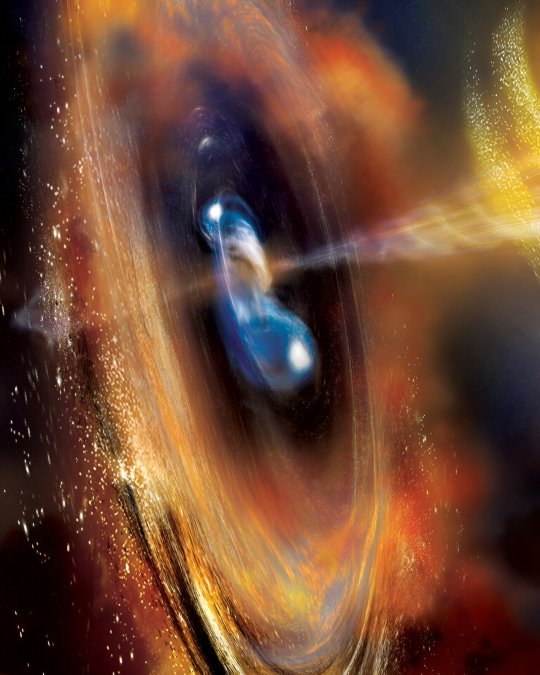
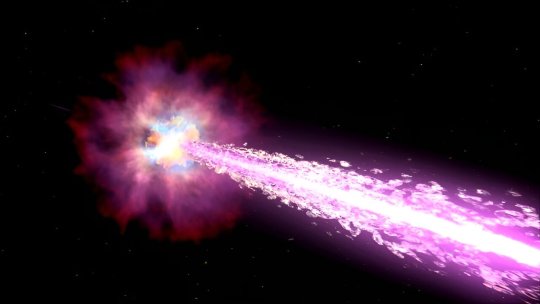

Gamma-ray bursts: Harvesting knowledge from the universe's most powerful explosions
The most powerful events in the known universe—gamma-ray bursts (GRBs)—are short-lived outbursts of the highest-energy light. They can erupt with a quintillion (a 10 followed by 18 zeros) times the luminosity of our sun. Now thought to announce the births of new black holes, they were discovered by accident.
The backstory takes us to 1963, when the U.S. Air Force launched the Vela satellites to detect gamma rays from banned nuclear weapons tests. The United States had just signed a treaty with the United Kingdom and the Soviet Union to prohibit tests within Earth's atmosphere, and the Vela satellites ensured all parties' compliance. Instead, the satellites stumbled upon 16 gamma-ray events.
By 1973, scientists could rule out that both Earth and the sun were the sources of these brilliant eruptions. That's when astronomers at Los Alamos National Laboratory published the first paper announcing these bursts originate beyond our solar system.
Scientists at NASA's Goddard Space Flight Center quickly confirmed the results through an X-ray detector on the IMP 6 satellite. It would take another two decades and contributions from the Italian Space Agency's BeppoSax and NASA's Compton Gamma-Ray Observatory to show that these outbursts occur far beyond our Milky Way galaxy, are evenly distributed across the sky, and are extraordinarily powerful. The closest GRB on record occurred more than 100 million light-years away.
Though discovered by chance, GRBs have proven invaluable for today's researchers. These flashes of light are rich with insight on phenomena like the end of life of very massive stars or the formation of black holes in distant galaxies.
Still, there are plenty of scientific gems left to discover. In 2017, GRBs were first linked to gravitational waves—ripples in the fabric of space-time—steering us toward a better understanding of the how these events work.
The long and short of GRBs
Astronomers separate GRBs into two main classes: short (where the initial burst of gamma rays lasts less than two seconds) and long events (lasting two seconds or longer).
Shorter bursts also produce fewer gamma rays overall, which lead researchers to hypothesize that the two classes originated from different progenitor systems.
Astronomers now associate short bursts with the collision of either two neutron stars or a neutron star and a black hole, resulting in a black hole and a short-lived explosion. Short GRBs are sometimes followed by kilonovae, light produced by the radioactive decay of chemical elements. That decay generates even heavier elements, like gold, silver, and platinum.
Long bursts are linked to the explosive deaths of massive stars. When a high-mass star runs out of nuclear fuel, its core collapses and then rebounds, driving a shock wave outward through the star. Astronomers see this explosion as a supernova. The core may form a either a neutron star or a black hole.
In both classes, the newly born black hole beams jets in opposite directions. The jets, made of particles accelerated to near the speed of light, pierce through and eventually interact with the surrounding material, emitting gamma rays when they do.
This broad outline isn't the last word, though. The more GRBs astronomers study, the more likely they'll encounter events that challenge current classifications.
In August 2020, NASA's Fermi Gamma-ray Space Telescope tracked down a second-long burst named GRB 200826A, more than 6 billion light-years away. It should have fallen within the short-burst class, triggered by mergers of compact objects.
However, other characteristics of this event—like the supernova it created—suggested it originated from the collapse of a massive star. Astronomers think this burst may have fizzled out before it could reach the duration typical of long bursts.
Fermi and NASA's Neil Gehrels Swift Observatory captured its opposite number, GRB 211211A in December 2021. Located a billion light-years away, the burst lasted for about a minute. While this makes it a long GRB, it was followed by a kilonova, which suggests it was triggered by a merger. Some researchers attribute this burst's oddities to a neutron star merging with a black hole partner.
As astronomers discover more bursts lasting several hours, there may still be a new class in the making: Ultra-long GRBs. The energy created by the death of a high-mass star likely can't sustain a burst for this long, so scientists must look to different origins.
Some think ultra-long bursts occur from newborn magnetars—neutron stars with rapid rotation rates and magnetic fields a thousand times stronger than average. Others say this new class calls for the power of the universe's largest stellar residents, blue supergiants. Researchers continue to explore ultra-long GRBs.
Afterglows shedding new light
While gamma rays are the most energetic form of light, they certainly aren't the easiest to spot. Our eyes see only a narrow band of the electromagnetic spectrum. Studying any light outside that range, like gamma rays, hinges tightly on the instruments our scientists and engineers develop. This need for technology, alongside GRBs' already fleeting nature, made bursts more difficult to study in early years.
GRB afterglows occur when material in the jets interact with surrounding gas.
Afterglows emit radio, infrared, optical, UV, X-ray, as well as gamma-ray light, which provides more data about the original burst. Afterglows also linger for hours to days (or even years) longer than their initial explosion, creating more opportunities for discovery.
Studying afterglows became key to deducing the driving forces behind different bursts. In long bursts, as the afterglow dims, scientists eventually see the source brighten again as the underlying supernova becomes detectable.
Although light is the universe's fastest traveler, it can't reach us instantaneously. By the time we detect a burst, millions to billions of years may have passed, allowing us to probe some of the early universe through distant afterglows.
Bursting with discovery
Despite the expansive research conducted so far, our understanding of GRBs is far from complete. Each new discovery adds new facets to scientists' gamma-ray burst models.
Fermi and Swift discovered one of these revolutionary events in 2022 with GRB 221009A, a burst so bright it temporarily blinded most space-based gamma-ray instruments. A GRB of this magnitude is predicted to occur once every 10,000 years, making it likely the highest-luminosity event witnessed by human civilization. Astronomers accordingly dubbed it the brightest of all time—or the BOAT.
This is one of the nearest long burst ever seen at the time of its discovery, offering scientists a closer look at the inner workings of not only GRBs, but also the structure of the Milky Way. By peering into the BOAT, they've discovered radio waves missing in other models and traced X-ray reflections to map out our galaxy's hidden dust clouds.
GRBs also connect us to one of the universe's most sought-after messengers. Gravitational waves are invisible distortions of space-time, born from cataclysmic events like neutron-star collisions. Think of space-time as the universe's all-encompassing blanket, with gravitational waves as ripples wafting through the material.
In 2017, Fermi spotted the gamma-ray flash of a neutron-star merger just 1.7 seconds after gravitational waves were detected from the same source. After traveling 130 million light-years, the gravitational waves reached Earth narrowly before the gamma rays, proving gravitational waves travel at the speed of light.
Scientists had never detected light and gravitational waves' joint journey all the way to Earth. These messengers combined paint a more vivid picture of merging neutron stars.
With continued research, our ever-evolving knowledge of GRBs could unravel the unseen fabric of our universe. But the actual burst is just the tip of the iceberg. An endless bounty of information looms just beneath the surface, ready for the harvest.
TOP IMAGE....Two neutron stars begin to merge in this artist’s concept, blasting jets of high-speed particles. Collision events like this one create short gamma-ray bursts. Credit: NASA’s Goddard Space Flight Center/ A. Simonnet, Sonoma State University
CENTRE IMAGE....As a high-mass star explodes in this artist’s concept, it produces a jet of high-energy particles. We see GRBs when such jets point almost directly at Earth. Credit: NASA/Swift/Cruz deWilde
LOWER IMAGE....The Hubble Space Telescope’s Wide Field Camera 3 revealed the infrared afterglow (circled) of GRB 221009A and its host galaxy, seen nearly edge-on as a sliver of light extending to upper left from the burst. Credit: NASA, ESA, CSA, STScI, A. Levan (Radboud University); Image Processing: Gladys Kober
7 notes
·
View notes
Note
Hi! 🙂 Enjoyed your game very much! Especially the cosmic horror scene in which the God mode MC wakes up 😄. I hope to see more how absurd and horrifying GM power can be from other POVs. Definitely one of my favorite WIPs.
So, I have a few questions and a few suggestions. I'll start with the questions.
I'll refer to the MC as him.
1) What the scope of Alexis' omniscience? In other replies you mentioned that she knows everything across all timelines. Do you mean it just in the context of TLs that MC with time powers can create or is she also aware of routes where MC has different powers? Or maybe she knows that MC can have other names, genders, and appearances? Or, taken to the extreme, she is even aware of the 4th wall? In which case, does she know that the MC is the protagonist?
2) You said that the God mode MC posesses some degree of omniscience. However, it doesn't seem very consistent, so I just wanted to clarify it's extent. For example the MC seems to sense the entire universe, immediately notices that the storm is alive, knows who Gaia and Elara are before meeting them, knows everything about the DA, and, when talking to Gaia, says that the only thing he doesn't know is what he is. However in other scenes he doesn't seem to be aware of things that happen in his direct vicinity, like when he doesn't notice that the pond is actually a guy, and can't instantly identify and locate Michael. So, what the God mode MC does and doesn't know?
3) You often refer to the MC, Alexis, Adam, and Ron as anomalies. What does it actually mean? Is it just that they have particularly strong abilities, or is there another, deeper meaning?
Now, to suggestions.
1) I think the God mode MC's personality should be somewhat different from MCs with other powers.
For example one personality can be apathetic and disconnected from humanity, kind of like Dr. Manhattan.
Another personality may be carefree and friendly, but somewhat lacking common sense, like genuinely not getting what is the big deal about dissipating the red storm with a single thought.
Another personality might be nonsensical and crazy, like Sheoggorath.
Yet another one might be proud and even arrogant like Gilgamesh from Fate.
But, regardless of personality type, in my opinion the God mode MC should almost never act surprised, confused, or puzzled, even when the player is. Unless something truly unexpected occurs, he should always have this "all according to keikaku" attitude.
2) I think telepathy and superintelligence should also to some extent affect the way MC acts and views others.
3) I've seen somebody suggest adding gravity control. But how about taking it a step further and adding the power to manipulate all 4 fundamental interactions? This would be a pretty versatile and powerful ability.
Basic uses of gravity manipulation would allow levitation, telekinesis, controlling mass of objects, repelling attacks and just collapsing enemies into meatballs or flattening them into pancakes. On the high end it could be used to create black holes or even wormholes.
EM manipulations at its most basic could be used to zap people, control metals, turn coins into railgun projectiles, etc. Also it would allow to manipulate EM spectrum, for example bend light to shoot lasers or turn invisible, have x-ray or infrared vision, see through walls, hear radio waves, emit gamma rays or act as a radar. Most precise level of control would allow modifying mechanical properties of materials, turning matter into antimatter by changing electic charge and desintegrating enemies by cancelling chemical bonds inside them.
Honestly it would be a pretty cool power just by itself, though MC would probably be a constant nuisance to Olivia by being a walking EMP device 😅
Weak force could be used to destroy things through nuclear decay or turn any object into a neutron bomb.
Strong force could be used to transform one element into another, split things into elementary particles, etc. The flashiest application though is the matter-to-energy conversion, which would allow to turn any mass into improvised nukes, for example a 50ml glass of water would yield a 1 megaton explosion.
The applications overlap though, as such both gravity and EM would enable some forms of flight, matter-antimatter annihilation functionally isn't any different from matter-to-energy conversion, etc.
4) When MC with telepathy and God mode hears phrases in other languages they should probably be translated. The superintelligent MC might also be able to at least pick up the meaning from the context.
5) It would be cool if MCs with telepathy, superintelligence and God mode could fry or overload the brains of hostile telepaths.
The first question would be answered in-depth with the next GM update.
It's pretty hard to explain the degree of the GM MC's partial omniscience, so I'll just put it this way, the MC is aware of almost anything, but has some blind spots at the moment due to them not being fully aware and accepting their entire situation.
This would change however, after the update and their meeting Alexis.
Firstly, you should really add MC's sister to be among the top of that list. Secondly, there is a deeper meaning, but it contains spoilers so I'll just let Pryon tell you themselves when your MC meets them.
Now for your suggestions:
I'm totally in line with your first suggestion.
The second suggestion is also something I agree with and have been trying to implement.
The third suggestion sounds super OP, I'll definitely note that down.
The fourth suggestion is already being implemented.
The last suggestion is something I also fall totally in line with.
Thanks a lot, really, I appreciate long feedback like this that takes a lot of time just to help point things out and point me in the right direction.
15 notes
·
View notes
Photo
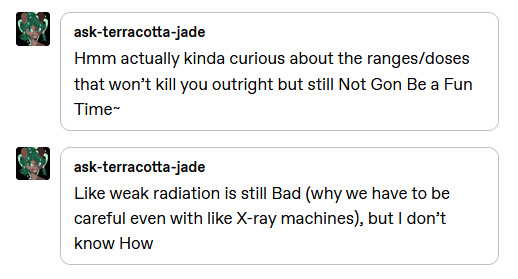
I want to answer this one first because it is its own WHOLE thing.
So to answer “why radiation bad and why doses matter,” we gotta explain a couple things first, then it’ll be much clearer. Under a read more because it’s long as fuck and I describe some pretty graphic things.
Radiation
This word actually means a broad range of Things. It is energy emitted from a source. So like, heat is a type of radiation. Radio waves are a type of radiation. Visible light is a type of radiation. And technically, all of these, in certain doses, can be harmful.
But when people are talking about radiation associated with nuclear energy, they are almost always talking about high-energy radiation--pretty much everything to the right of the visible spectrum on this graph here.

IN GENERAL, the shorter the wavelength, the smaller the quantity you can be exposed to before it hurts you, but this is an INCREDIBLY broad statement that lacks any nuance, but will suffice for the average person. So if you were exposed to 15 minutes of x-rays, and 15 minutes of gamma rays in the same intensity, the x-rays will hurt you less than the gamma rays.
Now, technically, “nuclear radiation” encompasses three different types: alpha, beta, and gamma radiation. But again, when people are talking about nukes and nuclear radiation, they are almost always referring to the dangers of gamma radiation, not alpha and beta, which can be blocked by your skin and by a shirt, respectively. But you need a foot of lead to protect you from gamma rays.
Atoms, when exposed to radiation, do various things. Molecules, when exposed to radiation, do various things. Most of the time, molecules, when exposed to gamma radiation, will break down in some way. This is neither bad nor good; it has a variety of applications. But we’ll get to that later.
DNA and Mitosis
The second thing to cover is DNA, cell splitting, and how that affects your body.
Your body is made of cells that are constantly dying. Different cells die at different rates, but they all are. But why are you not dead, you ask? Because your body is also always replenishing those cells, via cell splitting. Living cells split, cells die, more living cells split, etc.. You are in a constant state of equilibrium because of this cell splitting. When we die, we decay, because the cells are dying and nothing is replenishing them.
Your DNA is what tells your cells to split and replenish. The DNA splits in half down the middle of the “ladder,” and each half goes to a cell, and then each half of the ladder is replenished inside this cell--creating a copy. Your DNA is a code that tells cells what to do, and different cells do this in different ways. But they all stem from the DNA you carry inside all the cells in your body.
This process isn’t 100% perfect, sometimes cells end up with mistakes because of the process, and usually these are benign. One cell being a bad copy won’t really hurt anything. Usually what happens is that cell will die and the DNA will continue splitting and copying itself just fine.
But sometimes those mistakes do keep living. And they will keep making more Mistake Copies. This is what we call cancer. Faulty DNA copies that are going on to make more faulty cells.
When you receive an injury, your body has to make extra cell copies. Every time cells copy, there’s a chance they’ll fuck up, so the more times a cell is making copies, the more chances for something to fuck up. When you get a burn on your hand from the stove, your body’s gotta go into overtime to make extra skin cells to replace the ones that died from the burn.
Now, here is one more thing to remember before we move on:
DNA is a molecule. It’s a bigass chain of a molecule that holds a ridiculous amount of atoms, but it is still a molecule. Keep this and what I said before about what happens when molecules are exposed to energy in mind.
Radiation and Fuck Up Cells
DNA, when exposed to any type of energy, will change. Once the source is gone, it’ll go back to normal.
Usually.
But sometimes, when exposed to energy, that energy will fuck up or bonk off atoms and the stuff that makes them. If you recall, chloride is quite poisonous, but the addition of a single atom of sodium turns it into sodium chloride, i.e., salt, right? Atoms getting bonked off is going to change the composition of the DNA. It’s going to change the coding. It could change a code of BAC to BCC. It could even delete some of them, turning it into B_C.
As mentioned before, little fuck ups like these don’t usually matter. There’s enough correct copies to make up for the fuckup copies.
But here is where the danger of radiation comes in, the dose, how much, and how powerful that dose was. Because the higher the energy, the more likely it is that the DNA will get fucked up and either the cell will die because the code is wrong, or the cell will live, but with a fucked up code, becoming a cancer of some kind.
If you imagine DNA as a bunch of cans stacked along a fence post, then radiation is the kid with a BB gun who takes pot shots at the cans.
Now, which will happen? Will the cell die off, or will it live and mutate? Depends on what type of exposure you had, and there’s two main types: acute high-intensity exposure, and long-term/chronic low-intensity exposure. It’s really more of a spectrum, but in terms of “are you going to survive this or not,” you really only care about those two labels.
Long-term low-intensity exposure usually means the cells won’t die off. Not enough mistakes to outright kill the cell, but the chances of some mistake happening get higher, increasing your chances of something mutating. Sunburns, for example, are a long-term low-intensity radiation exposure. It’s a low intensity radiation (compared to say, gamma radiation) but it can still take pot shots at your DNA, as it were. Via the random happenstance of nature, some people will roll the dice and those potshots will never hit anything crucial. For some people, they will, and they get melanoma.
You can have long-term low-intensity exposure to gamma radiation. But that intensity has to be MUCH lower than sunlight. Even a little bit more intense will be more likely to cause cell death than cell mutation. This is part of the danger of gamma radiation. It takes a lot less of it to kill. Think of venom potency, the dangerous ones are the venoms that you only need micrograms of to kill someone, instead of a gram.
The second kind of exposure, acute high-intensity exposure, is the much more immediately life-threatening kind. Low-intensity long-term radiation might give you cancer that will kill you, but that process typically takes months to years to decades. The lower the intensity, the longer it can take (and some very unlucky people will roll the dice and roll poorly. it happens).
Acute, high-intensity exposure to gamma radiation is like firing a machine gun at those cans on the fence. Depending on intensity and length of dose, this can sometimes break the entire DNA molecule, to where it can’t even split anymore. Not just “it splits and the cell gets a wonky version” but “the cell just cannot split at all and dies off without being replicated and replenishing the cell count.”
Now think back to what I said about all of us and the fact that all of our cells are dying constantly, but they’re also being replenished constantly.
So what happens if the cells just die, and aren’t replenished anymore?
Decay, essentially.
Sunburns come from ultraviolet light. That light doesn’t really penetrate farther than your skin. This is why you don’t tend to get melanoma on say, your liver, or your bones, which are generally shielded by a bunch of meat and ligaments. The most that the radiation can damage is the skin. Your muscles aren’t really at risk for DNA damage.
Gamma radiation, however, can pass right through you. Think about this. This machine gun taking potshots at your cans on the fence can reach your skin, muscle, bones, brain, internal organs, all of it. Every single part of you can suffer DNA damage from gamma radiation.
All of those layers of cells can be damaged. At once. (Again, depending on how you were exposed. If only your hand was exposed to a bunch of gamma radiation but the rest of your body was behind a shield, then it’d just be the hand that is damaged.)
You are decaying alive if you have acute lethal radiation exposure. Your cells are dying, and they are not being replenished. This can only go on so long before things start to fail.
Your bone marrow makes your blood. If your bones and marrow are too damaged and beginning to fail, they cannot make more blood for you.
At the same time that blood cells are dying.
At the same time that cells in organs are dying off, and making the organs fail. All of those organs are performing essential duties in your body. Your liver fails, you can no longer filter said blood. Which is not accumulating dead blood cells, as well as the dead liver cells, which are also toxic.
At the same time that your skin cells are dying, and not being replenished, meaning you’re losing layers of skin. This typically looks like necrosis. Your skin can no longer heal from even minor abrasions and lacerations, eventually from things as small as your skin stretching as you turn your head. Eventually, you cannot even take morphine shots because you don’t have enough skin and flesh to inject morphine into, because surprise! Your veins are dying off too.
At the same time your immune cells are dying off. Meaning every new opening in your skin is a new source of infection, and with no immune cells, you cannot fight off even tiny infections. (This is typically the reason people die of AIDS; it kills their immune system, and they die of something that they could have likely fought off otherwise, such as a common cold or hangnail infection.)
Radiation injuries can be thought of much like burns. If you were to receive a blowtorch to your hand for a second, it’d probably permanently fuck up your hand. But it would not likely kill you. However, if you were to receive second-degree burns over most of your body, that could be enough to fuck up your keeping-you-alive equilibrium (homeostasis) enough to create a cascade of Bad Things, that can eventually kill you. Remember, bruises can kill, too. If it’s larger than a football, it presents a significant danger, which increases with bruise size.
There are many incidents of persons exposed to the same amount of radiation that killed numerous Chernobyl firefighters and living. However, they were exposed in small areas. Depending on how long that exposure lasted, that could have meant a very large ulcer, or enough damage that they had to lose the leg. And some lucky sons of bitches have been exposed to many times the radiation the Chernobyl firefighters were exposed to--but in the form of a ray of energy about one proton wide--and lived. (It went through his skull. He had some facial paralysis sort of like a stroke, but was otherwise fine and in fact, still alive and kicking.)
As you might be able to tell, measuring something as nebulous as “exposure” with so many influencing factors can be very, very tricky to do. Scientists have a lot of different ways to do so. But the most important things are essentially how intense the energy was, how long, and over what percentage of your body.
And then every so often there’s a freak of nature who, by all circumstances, should have been dead several times over, and wasn’t, because by all calculations their exposure was huge in every category. We do not know why they lived. We respect and fear these people for even the universe’s most dangerous aspects could not kill them.
Do not ever assume you will be one of those. You will not.
I hope that was helpful at all! If anything is confusing, lemme know and I can clarify!
32 notes
·
View notes
Text
Surprise I’m a chemistry nerd and I just had a cursed thought.
The omega verse except with radioactive decay terms.
Alpha; a person that has the babies (because atom decay is where a mother cell splits into two daughter cells, one being significantly smaller than the other.)
Beta; a person that helps with the other side of that birthing process- sperm-
(Because in beta radiation they let go of an electron of either negative or positive charge so this makes sense in my mind)
And finally Gamma; these people would be like the betas in my mind, except they’re like the top dog in everything, the “leaders”.
(Because I’m Gamma, the atoms just rearrange and let off gamma rays and not anything neutrons, protons, or electrons.)
So the higherarchy would be
1. Gamma
2. Beta
3. Alpha
Because, gamma has the most penetrative energy, followed by beta, and lastly by alpha.
To top this little mind goblin of mine off, I can’t help but think this whole world is just filled with and mainly consisting of women because of the whole terms of mother and daughter atoms-
4 notes
·
View notes